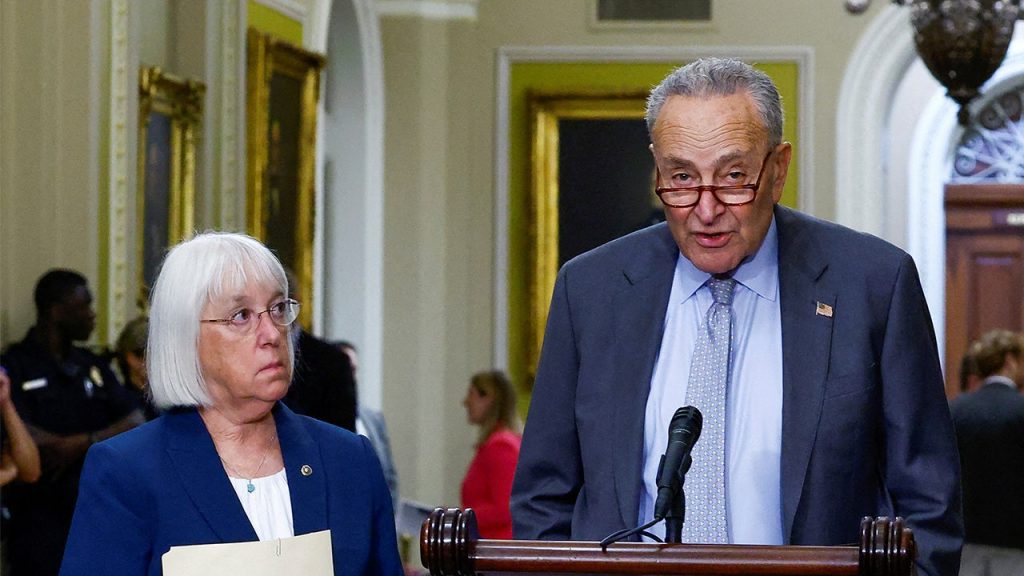The looming threat of a partial government shutdown hangs heavy over Washington, D.C., as top Senate Democrats dig in their heels, refusing to budge from the original stopgap spending bill that was scuttled by Republican House members following pressure from influential figures like Elon Musk and President-elect Trump. Senate Majority Leader Chuck Schumer and Appropriations Committee Chairwoman Patty Murray have both publicly declared their commitment to the initial bipartisan agreement, urging Republicans to return to the negotiating table and pass the previously agreed-upon continuing resolution (CR). They argue that this is the most expedient and responsible path forward, providing crucial disaster relief and enacting sensible policy reforms while averting the chaos and financial burden of a government shutdown.
The Democrats’ staunch position comes in response to the unexpected derailment of the original spending bill. After its release, the 1,547-page document drew sharp criticism from Elon Musk and other conservatives who opposed specific provisions. This disapproval gained momentum, culminating in President-elect Trump and Vice President-elect JD Vance denouncing the bill, effectively killing its chances of passage. Democrats see this interference by an “unelected billionaire,” as Senator Murray put it, as an unacceptable intrusion into the legislative process, potentially jeopardizing vital research funding and policies aimed at bolstering American competitiveness.
Senator Murray has made it clear that she is prepared for a protracted battle, even if it means remaining in Washington throughout the Christmas holidays. She emphasized the importance of not allowing external influences, particularly those from the private sector, to dictate government operations and policy decisions. Echoing her sentiments, Senator Schumer implored House Republicans to reconsider their position and return to the bipartisan agreement, warning that a government shutdown is imminent if they fail to act swiftly. He expressed confidence that the original bill would pass if brought to the House floor for a vote, thereby averting the impending crisis.
The situation is further complicated by the House Republicans’ unveiling of a new continuing resolution proposal. While details of this alternative plan remain unclear, and the extent of bipartisan or bicameral negotiations is uncertain, it appears to deviate from the original agreement that Senators Schumer and Murray are championing. This sets the stage for a potential standoff between the two chambers, with the Senate Democrats seemingly unwilling to compromise on their commitment to the original bill.
Adding to the intricate political calculus, several Republicans have also signaled their willingness to accept a government shutdown if it means securing a more favorable deal. This hardline stance further complicates the already tense negotiations and raises the stakes as the deadline approaches. President-elect Trump’s public statement urging a shutdown now, rather than after he takes office, further fuels the partisan divide and amplifies the pressure on both sides to reach an agreement. Congress has until midnight on Saturday to pass a spending measure and secure President Biden’s signature, or a partial government shutdown will become a reality.
The crux of the disagreement lies in the competing priorities and interpretations of fiscal responsibility. Democrats argue that the original stopgap bill represented a carefully crafted compromise, addressing critical needs while maintaining responsible spending levels. They view the Republican opposition, influenced by external pressures, as jeopardizing essential services and potentially causing unnecessary hardship for the American people. Republicans, on the other hand, may seek further spending cuts or policy changes, framing their position as a necessary measure to control government spending and address what they perceive as wasteful or ineffective programs. The looming shutdown underscores the deep divisions within Congress and the challenges of finding common ground in an increasingly polarized political landscape.

